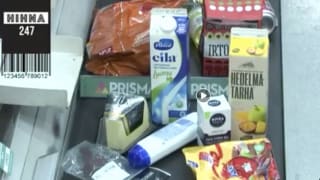Five secrets to local involvement in tourism marketing
By Hallie Milstein, Content Director, Trove
Successful community-based tourism (CBT) marketing campaigns rely on the collaboration of the agency with local communities and trade partners. This model of tourism development and marketing seeks to empower locals by giving them the capability and visibility to support increased tourism. However, without a solid foundation of local involvement, the campaign will fall short of yielding the desired results for all involved.
Trove Tourism Development Advisors specialises in establishing community-based initiatives with high involvement, and here we outline two of our recent CBT projects to inspire your own strategies. In Andros, Bahamas, Trove implemented a cluster strategy to rouse local buy-in for long-term impact. In Cambodia, our marketing team prompted local involvement by installing steering groups which identified community sentiment and aligned interests.
Here are some of our insights from our practised methodology for establishing working relationships, because tourism marketing entails building trust and the application of stakeholder groups.
1. Listen to Understand
Often, listening is not as simple as it sounds in CBT scenarios. In destinations with low tourism development, it may be necessary for agencies to work around technological limitations. Furthermore, both synchronous and asynchronous options for communication are often received well, as they allow for individuals to communicate around busy schedules. This may include group and private messaging, in-person or digital “office hours,” seminars, and webinars.
The key is opening communication so that locals can know they are being heard, and the agency can listen. This must all be done with the goal of understanding the needs, challenges, pressure points, and opportunities of individuals and the community. There are several strategies to actualise communication for productive understanding, illustrated in the following two points.
2. Engage Steering Groups
To inform marketing initiatives, you should conduct targeted interviews using a steering group method. For clients such as the Cambodia Ministry of Tourism, Trove begins by assembling five groups that represent the local community’s interests:
(1) local and national government officials;
(2) hospitality-focussed private sector businesses such as airlines, restaurants, and hotels;
(3) tour operators and representatives from visitor associations;
(4) real estate/investors; and
(5) residents.
These groups are interviewed twice—first en masse, then in breakout sessions one group at a time. Through this process, you can discern the community’s priorities, challenges, and ideas, then conduct a pain-point analysis and SWOT analysis. After listening to local representatives, this process culminates in a stakeholder report and a greater understanding of the community.
3. Create a Cluster
In Andros, Trove spearheaded the creation of a “Cluster”, a community cooperative of businesses directly benefiting from tourism such as tour guides, hotels, and restaurants. Upon joining, cluster members are involved in every step of developing a marketing plan and maintain an open line of communication with the agency.
This strategy reaps multiple positive outcomes. First, the cluster provides community insights, allowing you to craft a brand for the marketing plan which accurately reflects the beating heart of the destination. Second, the cluster acts as a database for the agency, emblematic of what skilled professionals and products are available, capable, and desiring of advertisement for tourism uplift. Third, Andros cluster members are able to understand their position of authority within their island’s tourism marketing and development - thus, they become advocates for the plan’s success. As tourism grows in Andros, so will the cluster.
A CBT cluster such as this one may be replicated by creating a collective of hotels, short-term rentals, tour operators, guides, suppliers, in close partnership with local and national governments. Maximise strategy potential by marketing the cluster together on a shared tourism website connected to individual booking pages.
4. Ensure Mutual Benefits
Buy-in from local communities necessitates a shared understanding of mutual results. An agency’s marketing success depends upon community involvement and in turn, locals can benefit from a profitable increase in bookings. Additionally, despite establishing footing between the agency and the community as a collective, it is also crucial for individuals to feel significant within the group. This may be accomplished by consistent communication, acknowledging individuals needs and concerns, and providing customised resources.
For example, in Andros, Trove acts as a resource and sounding board for local business owners and operators involved in tourism and hospitality. In November 2023, Trove returns to Andros to help trade partners build an online presence to expand brand awareness and booking potential. Depending on the individual’s needs and goals for increased business, this may include a website and/or profiles for social media, Trip Advisor, and Google Business. As individual community members benefit, so does the community as a whole. These rising tides will also lift the marketing campaign boat.
5. Follow Through
Those with experience implementing CBT know that community engagement is often easier said than done. Locals of destinations with low tourism development are often sceptical to become involved or invested in new initiatives led by both outsiders and local tourism authorities. This is often due to prior failed initiatives that left a string of broken promises and wayward hopes. To build trust and move past locals’ hesitations, agencies must prove themselves. Set small benchmarks and meet them consistently to build trust. This will result in a long-term campaign partnership, just as Trove has secured in Cambodia and Andros.
Learn more about Trove’s strategic planning and marketing work: www.trovetourism.com









